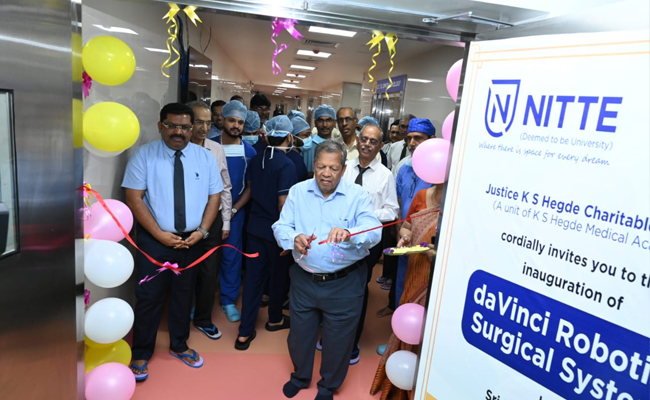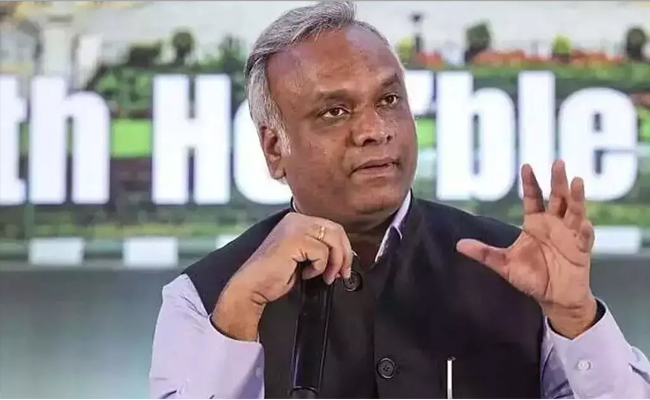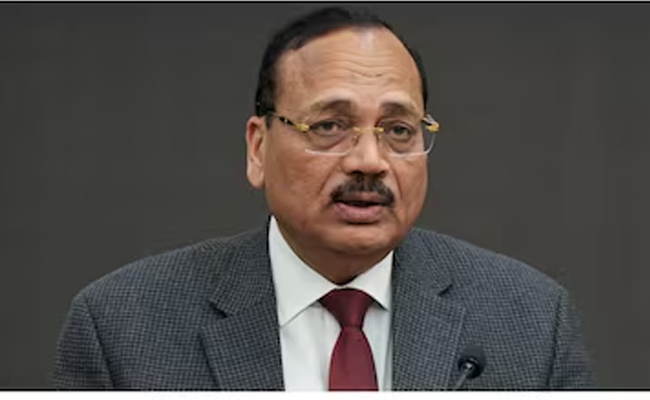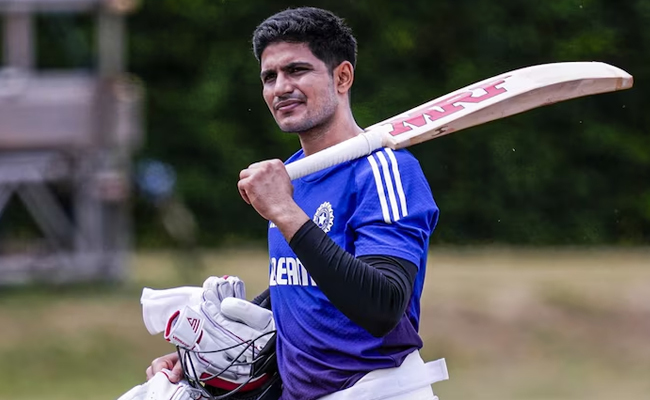Mangaluru (Press Release): Justice KS Hegde Charitable Hospital a leading healthcare provider in Mangalore, is proud to announce the launch of its cutting-edge robotic surgery program. This new initiative is set to revolutionize surgical care in our community by providing minimally invasive, highly precise, and patient-focused surgical solutions at the most affordable charges in the region.
The advanced robotic surgery facility is designed to deliver superior surgical outcomes with minimal pain, reduced blood loss, faster recovery times, and smaller scars. With this program, Justice KS Hegde Hospital reaffirms its commitment to making world-class healthcare accessible to all, particularly in a tier-3 city like Mangalore.
“Our hospital committed to providing quality health care services to all sections of the society. By bringing robotic surgery to our hospital, we aim to provide our patients with the most advanced surgical technology available, ensuring they receive the highest quality care close to home” said Sri N Vinay Hegde, the honourable Chancellor of NITTE (Deemed to be University) after officially launching the new facility.
Our robotic surgery program is equipped with US based Surgical Robot “daVinci”, the best and most advanced surgical robotic platform in the world which is able to handle a wide range of procedures across specialties, including Urology, Oncology (Cancer surgery), Gynaecology, Gastrointestinal surgery, General Surgery. The state-of-the-art robotic system enables surgeons to perform complex procedures with enhanced precision, visualization, and control. This breakthrough technology ensures better patient safety and surgical efficiency.
With in a month of starting new facility, Surgeons in the KS Hegde hospital successfully performed record number of robotic surgeries, 25 complex surgeries across all surgical specialities.
Justice KS Hegde Hospital celebrated its silver jubilee this year, serving the healthcare needs of thousands annually through its specialty hospitals and network of 22 rural health centres across four districts. The inauguration event was presided over by the Honourable Chancellor Sri N Vinay Hegde, with Pro-Chancellor (Hospital Management) Prof (Dr) M Shantharam Shetty, Pro-Chancellor (Administration) of Nitte University Mr. Vishal Hegde, and Vice Chancellor of Nitte University Prof (Dr) M S Moodithaya, Registrar Prof (Dr) Harsha Halahalli, I/c Dean, KSHEMA Prof (Dr) Jayaprakash Shetty, Medical Superintendent Prof (Dr) Sumalatha R Shetty,
The KSHEMA Robotic teams consists of co-ordinator Prof (Dr) Rajeev TP the team members include Prof (Dr) K R Bhagawan, Prof (Dr) Sripad G Mehandale, (Prof) Dr. Lakshmi Manjeera, Dr. Vinay Kumar Rajendra, Dr. Santosh Kumar, Dr Praveen Bhat, Dr. Suraj Hegde Dr. Narendra Pai.


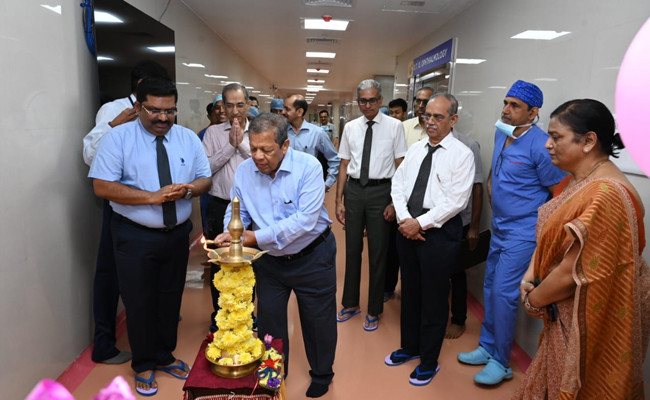
Let the Truth be known. If you read VB and like VB, please be a VB Supporter and Help us deliver the Truth to one and all.
Bengaluru: Rural Development and Panchayat Raj Minister Priyank Kharge has alleged involvement of the Rashtriya Swayamsevak Sangh (RSS) in a money transfer network at global level.
Posting his allegation on his personal ‘X’ account on Saturday morning, Kharge said that he was referring to an issue that had not been dealt with decisively by Indian media houses.
“Here is a crucial story that the Indian media will never touch,” the minister has said, and clarified, “This so-called “body of individuals” has built a global network of over 2,500 affiliated organisations. Through these fronts, the RSS collects “guru dakshina” to fuel its divisive agenda. (sic)”
Kharge has further alleged, “The world’s largest NGO is running amok, laundering money and evading accountability.”
The minister added, “Here is a map of their organisational architecture of their “Vichar Parivaar.” https://rssproject.caravanmagazine.in / @thecaravanindia”

